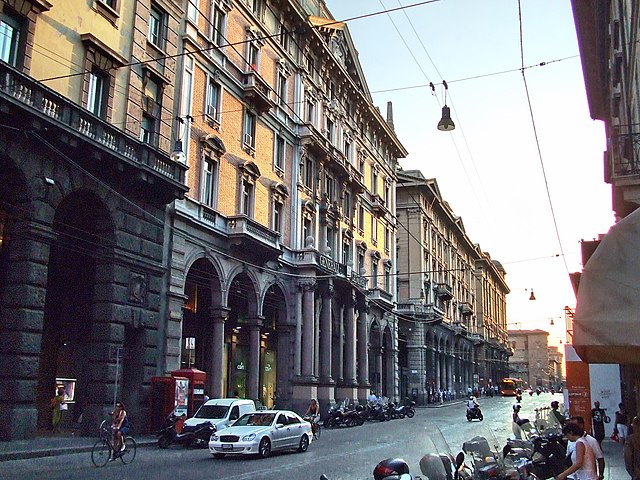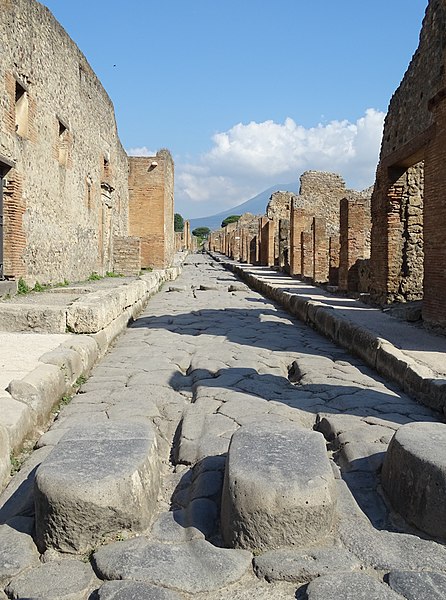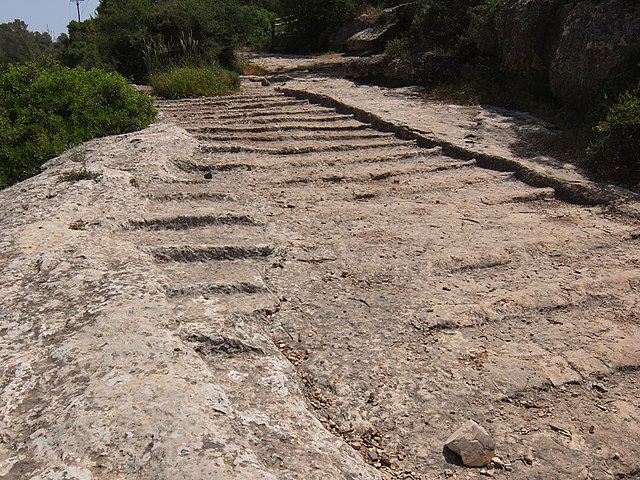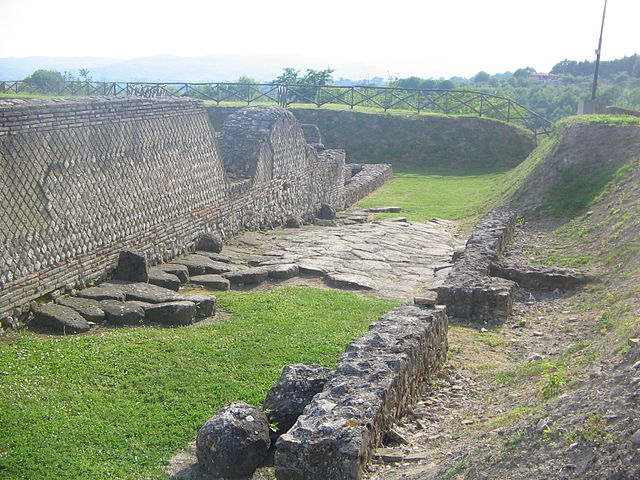The Via Aemilia was a trunk Roman road in the north Italian plain, running from Ariminum (Rimini), on the Adriatic coast, to Placentia (Piacenza) on the River Padus (Po). It was completed in 187 BC. The Via Aemilia connected at Rimini with the Via Flaminia, which had been completed 33 years earlier, to Rome.
The Via Aemilia crossing Bologna
The Via Emilia as it crosses central Bologna. This modern street, known in this stretch as the Via Rizzoli, overlies the old Roman road, which bisected the Roman colony of Bononia.
Roman bridge over the River Marecchia just outside Ariminum (Rimini), the starting point of the Via Aemilia. Today known as the Ponte Tiberio, it was built in 14 AD under Roman emperor Tiberius as part of a major upgrading of the whole Via Aemilia started under his predecessor Augustus.
Roman roads were physical infrastructure vital to the maintenance and development of the Roman state, and were built from about 300 BC through the expansion and consolidation of the Roman Republic and the Roman Empire. They provided efficient means for the overland movement of armies, officials, civilians, inland carriage of official communications, and trade goods. Roman roads were of several kinds, ranging from small local roads to broad, long-distance highways built to connect cities, major towns and military bases. These major roads were often stone-paved and metaled, cambered for drainage, and were flanked by footpaths, bridleways and drainage ditches. They were laid along accurately surveyed courses, and some were cut through hills, or conducted over rivers and ravines on bridgework. Sections could be supported over marshy ground on rafted or piled foundations.
A Roman street in Pompeii
Old Roman road, leading from Jerusalem to Beit Gubrin, adjacent to regional highway 375 in Israel
The central road of Aeclanum.
Section of the Via delle Gallie (Valle d'Aosta) in Italy, built by excavating the steep rock slope at left







